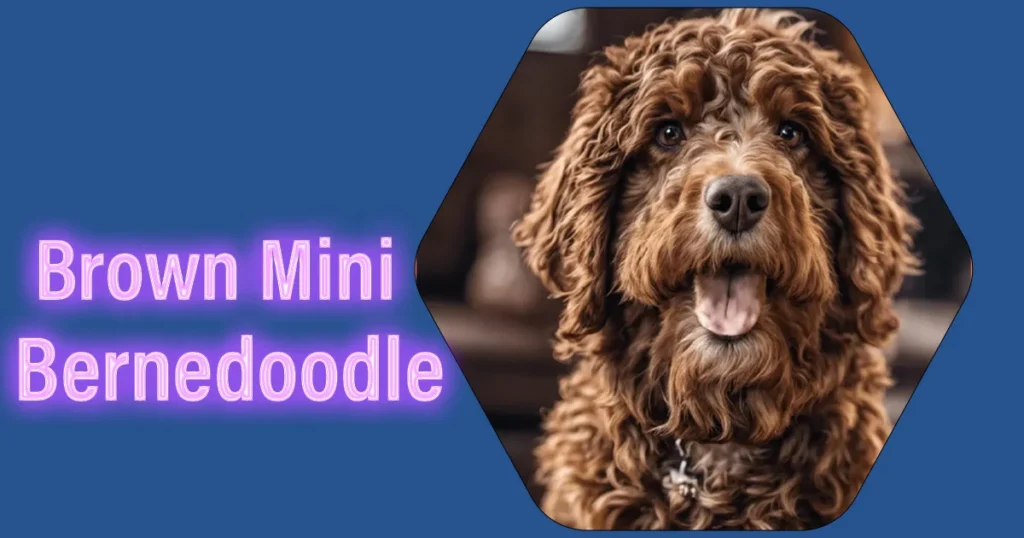Tri-color Mini Bernedoodles, a captivating blend of Bernese Mountain Dog and Poodle, mesmerize dog enthusiasts with their exquisite tri-color coats and versatile patterns. Their splendid black, rust, and white color variations, combined with their engaging temperaments, make these dogs highly desirable.
Navigating the complexities of selecting the perfect tri-color Mini Bernedoodle puppy involves understanding their unique genetic makeup and the importance of reputable breeding practices. This guide aims to equip prospective owners with the necessary knowledge to make an informed decision, focusing on health, temperament, and color fidelity in these beloved dogs.
Origin and Genetics of Tri Color Mini Bernedoodles
Breeding Tri Color Mini Bernedoodles is a meticulous process that hinges on a deep understanding of genetics and parent selection. The allure of these dogs lies not just in their striking tri-color coats but also in their delightful temperaments and low-shedding fur, making them a sought-after breed for families and individuals alike. Here’s a closer look at the genetic intricacies and breeding practices:
Genetic Factors and Generations
F1 Generation: A mix of 50% Bernese Mountain Dog and 50% Poodle, offering a blend of both breeds’ characteristics.
F1b Generation: Comprises 75% Poodle and 25% Bernese Mountain Dog, leaning more towards the Poodle’s low-shedding coat.
Genetic Testing: Essential for breeders to predict coat patterns and ensure the health of the puppies.
Breeding for Tri-Color
Parent Selection: Both parents must carry genes for the tri-color pattern. This often requires DNA testing and a deep understanding of each dog’s genetic makeup.
Color Patterns: Achieving the desired tri-color pattern can be a gamble, with each litter presenting a unique combination of the parents’ colors. Some puppies may display solid black, black and white, or show rust markings from birth.
Ethical Breeding Practices
- Health and Temperament: While the tri-color coat is desirable, responsible breeders prioritize the overall well-being of the puppies, ensuring they are healthy and have good temperaments.
- Selective Breeding: This involves careful planning and sometimes multiple generations to achieve the tri-color coat, without compromising the dogs’ health.
In essence, the creation of a Tri Color Mini Bernedoodle is a blend of art and science, requiring patience, knowledge, and a commitment to ethical breeding practices.
Unique Characteristics of Tri-Color Mini Bernedoodles
Tri-color Mini Bernedoodles are renowned not only for their distinctive coats but also for their well-rounded personalities and adaptability, making them an ideal choice for a variety of households. Here’s a closer look at their unique characteristics:
Size and Coat
- They stand approximately 18 to 22 inches tall and weigh between 25 to 49 pounds.
- Their coats can range from loose waves to tight curls and are known for minimal shedding, which is a boon for allergy sufferers.
- The color variations include black, black and white, black and brown, and the highly sought-after tri-color.
Personality Traits
- These dogs inherit a blend of traits from both the Bernese Mountain Dog and the Poodle, making them intelligent, energetic, playful, loyal, and gentle.
- They are known for their loving nature, often described as affectionate and loyal to their families, which makes them excellent companions.
Living and Compatibility
- Mini Bernedoodles adapt well to various living environments, thriving both in the city and the countryside.
- They are social, enjoy the company of their human families, and get along well with other pets, especially when introduced at a young age.
- With a moderate energy level, they love activities like playing, running, and hiking, making them perfect for active individuals or families.
This breed’s combination of hypoallergenic coat, charming personality, and adaptability to different lifestyles underscores its popularity and makes it a compelling choice for those looking to welcome a new canine member into their home.
The Breeding Science Behind The Tri-Color Coat
The intricate dance of genetics behind the tri-color coat of Mini Bernedoodles starts with understanding the fundamental pigments that paint their unique fur. Only two pigments, eumelanin (black) and pheomelanin (red), lay the foundation for the array of colors seen in these dogs.
The variation in color intensity is dictated by the amount of melanin present, with eumelanin potentially transforming into several diluted hues like liver or blue through genetic modifications. Similarly, pheomelanin offers a spectrum of shades from deep red to tan, with genes fine-tuning its intensity for a diverse palette.
Pigment and Dilution
Eumelanin: Defaults to black; modifications can dilute to liver, blue, or Isabella.
Pheomelanin: Ranges from deep red to tan; intensity adjusted by genes.
Dilution Gene: Affects both eumelanin and pheomelanin, leading to lighter shades or diluted colors.
Breeding Tri-Color Mini Bernedoodles is a meticulous process that combines the art of selecting the right parent breeds with the science of genetics. Breeders must possess a deep knowledge of genetic factors to predict and achieve the desired tri-color coat. This involves:
Selective Breeding
Choosing parent breeds that carry the tri-color gene, ensuring they pass on the desired coat pattern.
Genetic Testing: Essential for predicting coat patterns and maintaining health standards.
Ethical Considerations: Prioritizing health, temperament, and the well-being of the dogs over color traits.
The journey to breeding a Tri-Color Mini Bernedoodle is fraught with challenges, requiring patience, expertise in canine genetics, and a commitment to ethical practices. Achieving the coveted tri-color coat is akin to winning a genetic lottery, underscored by the breeder’s dedication to the health and temperament of their dogs.
This intricate process ensures that each Tri-Color Mini Bernedoodle not only captivates with its stunning appearance but also embodies a joyful and healthy companion.
Choosing Your Tri-Color Mini Bernedoodle
When selecting your Tri-Color Mini Bernedoodle, it’s paramount to prioritize health and temperament by choosing a reputable breeder. Here’s a structured approach to guide you through this crucial process:
Researching Breeders
- Check Online Presence: Visit their websites and social media. Look for transparency in practices and positive interactions with their community.
- Read Reviews: Google reviews and forums can provide insights into others’ experiences.
- Ethical Guidelines: Ensure they adhere to responsible breeding practices by confirming their affiliations with recognized canine health and welfare organizations.
Understanding Costs and Availability
- Selective Breeding Premium: Tri-color Bernedoodles may command higher prices due to their rarity and the extensive breeding process involved.
- Patience is Key: Be prepared to wait for the right puppy, as the demand for tri-color coats often exceeds supply.
Ethical Considerations
- Health and Temperament First: A responsible breeder will prioritize the well-being of the puppies over their color pattern.
- Avoid Puppy Mills: Be vigilant and ensure your chosen breeder conducts health screenings and offers a supportive environment for their dogs.
By following these guidelines, you can ensure you’re supporting ethical breeding while finding a healthy, well-tempered Tri-Color Mini Bernedoodle suited for your family.
Conclusion
As we conclude, it’s clear that the decision to bring a Tri-Color Mini Bernedoodle into your life entails more than just an appreciation for their striking appearance; it’s a commitment to supporting responsible breeding practices and ensuring a healthy, loving home for these intelligent, affectionate companions.
While the journey to find the perfect Tri-Color Mini Bernedoodle may be filled with anticipation and patience, the joy and companionship these remarkable dogs offer make every step worthwhile. Prospective owners are encouraged to approach this process with diligence and care, fostering a future where the beauty and well-being of every Tri-Color Mini Bernedoodle are equally cherished.
FAQs
- Are Tri Color Mini Bernedoodles hypoallergenic?
- While they may produce less dander than some breeds, Tri Color Mini Bernedoodles are not entirely hypoallergenic and may still trigger allergies in sensitive individuals.
- What is the average lifespan of a Tri Color Mini Bernedoodle?
- Tri Color Mini Bernedoodles typically live between 12 to 15 years with proper care and nutrition.
- How big do Tri Color Mini Bernedoodles get?
- They usually range in size from 10 to 20 inches tall and can weigh anywhere from 10 to 40 pounds, depending on their lineage.
- Are Tri Color Mini Bernedoodles good with children?
- Yes, Tri Color Mini Bernedoodles are known for their gentle and friendly nature, making them excellent companions for children of all ages.
- Do Tri Color Mini Bernedoodles require a lot of exercise?
- While they enjoy regular exercise, Tri Color Mini Bernedoodles do not require excessive amounts of physical activity. Daily walks and play sessions are usually sufficient to keep them happy and healthy.


